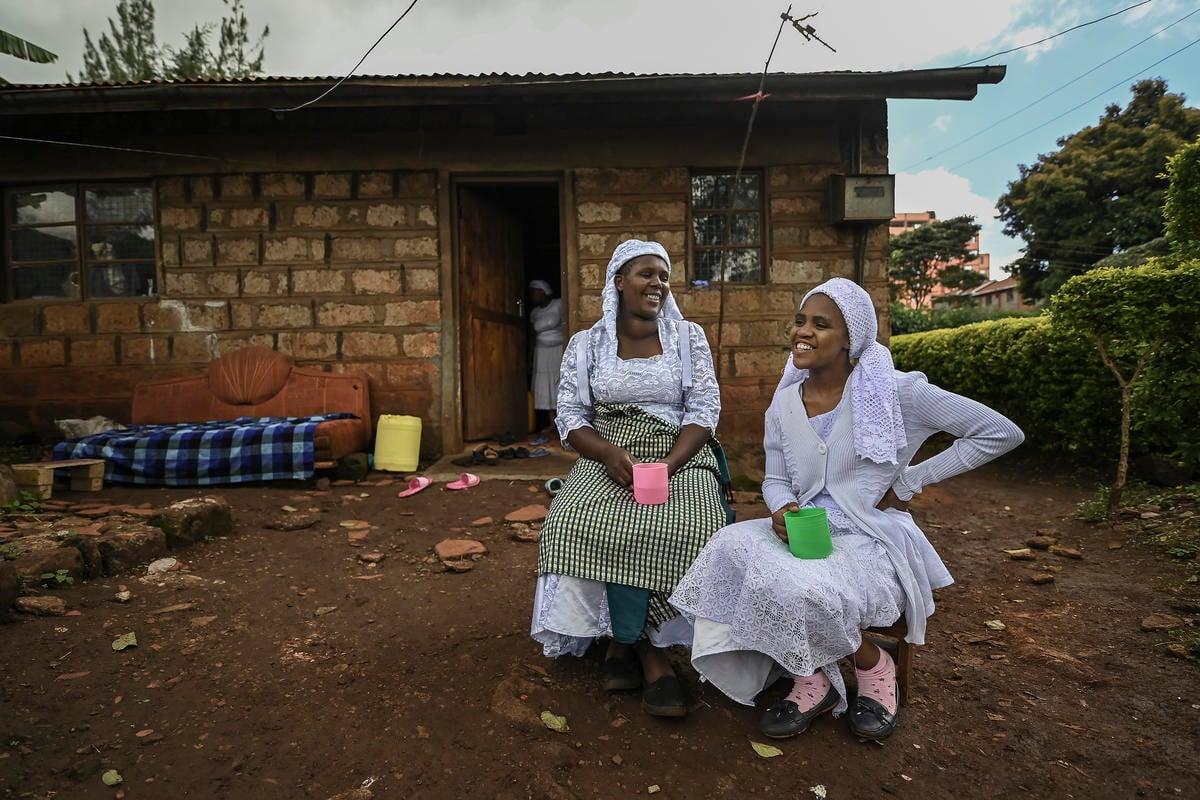Authored by Maja Lazić , Head of the World Bank-UNHCR Joint Data Center on Forced Displacement

Against all odds, Nosizi (right), a stateless Shona living in Kenya, qualified and was accepted to study economics at the University of Nairobi after the institution made an exception and registered her as a student even through she did not have the requisite identification documents.
While there is a clear, legal definition of statelessness, the real number of stateless people in the world is not as clear, and the reality of their lives even less visible.
Without citizenship of any country, stateless people face barriers to basic rights, such as access to a doctor, going to school, getting married and even moving freely. They face a life outside of the national system and services, and risk being excluded from national policies. One of the ways to address this challenge is with data.
In 2022, the UN Refugee Agency (UNHCR) reported only 4.3 million stateless and persons with undetermined nationality across 96 countries. This is a significant underestimate, in part, due to the different definitions of, and methods used, to collect data.
At the World Bank-UNHCR Joint Data Center on Forced Displacement (JDC) we aim to dramatically improve the quality, quantity and accessibility of data on refugees, internally displaced, stateless people, and the communities in which they live so that policymakers can make timely and evidence-informed decisions that improve their protection and wellbeing. A clear example of where data has helped to change policy concerning statelessness is in Kenya.
In 2019, the Government of Kenya, in collaboration with the World Bank and UNHCR, conducted a socioeconomic survey of the Shona community in urban counties. The survey collected data on household characteristics, poverty and living conditions and compared these to Kenyans in the host community as well as with national averages.
The figures were revealing. They showed that the Shona’s lack of documentation prevented them from gaining an education. A birth certificate is required to register for the last grade in primary school. For stateless Shona children, this was impossible and stopped them from pursuing further education. Urban Kenyan nationals were almost twice as likely to attend secondary school as their Shona counterparts (50 percent versus 28 percent).
Interestingly, the Shona were more likely to be employed than their Kenyan national counterparts (73 percent versus 69 percent). Yet, the Shona were most likely to be self-employed due to their lack of documentation, while there was a higher rate of wage employment for Kenyan nationals. In 2019,more than half of the community (53 percent) lived below the national poverty line, compared to almost 30 percent of Kenyans living in urban areas. The study illustrated that at the margins of society, they were neither protected nor able to contribute to the local community’s economic and social development.
One year after the survey was concluded, the Government of Kenya changed the situation for many of the stateless Shona by announcing that it would grant Kenyan citizenship to all eligible members of this community. By making the Shona visible to national policy makers it helped them to gain legal status through which they could be part of society and live a normal life like their Kenyan neighbors.
To achieve policy changes, research like that which was undertaken on the Shona people of Kenya, needs to be based on high-quality data that is gathered according to recognized standards and definitions. This is at the heart of the JDC’s efforts.
In 2021, the highest authority of the global statistical system, the United Nations Statistical Commission, approved the development of International Recommendations on Statelessness Statistics (IROSS). With the support of the JDC, and through dedicated efforts of 21 national statistical offices and numerous regional and international organizations, the Expert Group on Refugee, IDP (Internally Displaced People) and Statelessness Statistics (EGRISS) has established common standards and definitions that will improve the quality and availability of statistics on stateless populations. Following the endorsement of the recommendations, the next step is to roll them out in countries and support national statistical offices to integrate the statistical standards and definitions into their surveys.
The ongoing implementation of population censuses in the Central Asia region (2021-2023) is a critical opportunity to gather data on stateless people and to map the full extent of this occurrence in the region. The JDC is supporting the inclusion of stateless people in the censuses of Kazakhstan, Turkmenistan, Uzbekistan and Kyrgyzstan.
The comprehensive nature of the censuses will help identify stateless people and collect data on their socioeconomic characteristics, such as education and employment, providing essential data for national authorities to resolve statelessness. As the High Commissioner for Refugees has stated, “While we have seen great progress in the past few years to remedy this blight on humanity (statelessness), much more political commitment and effort is needed to improve the lives of the millions languishing without citizenship and living in the shadows.” Statistical inclusion is one important step in moving this exceptionally vulnerable group out of the shadows.


